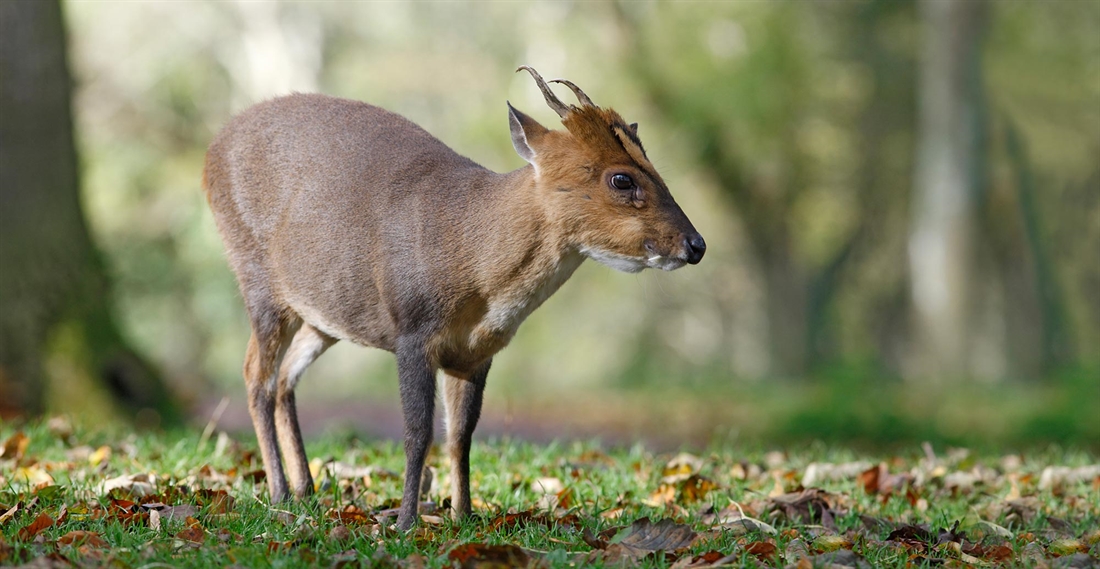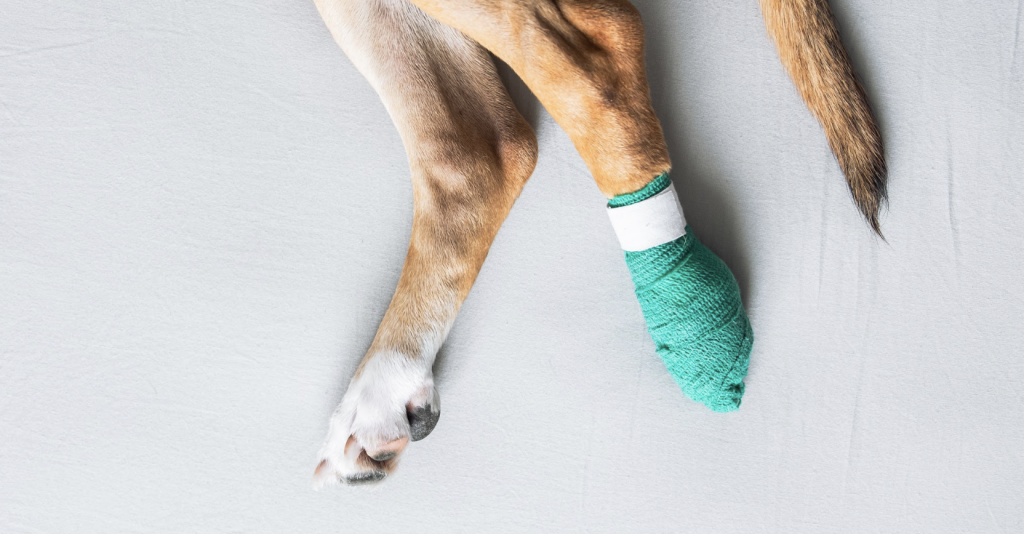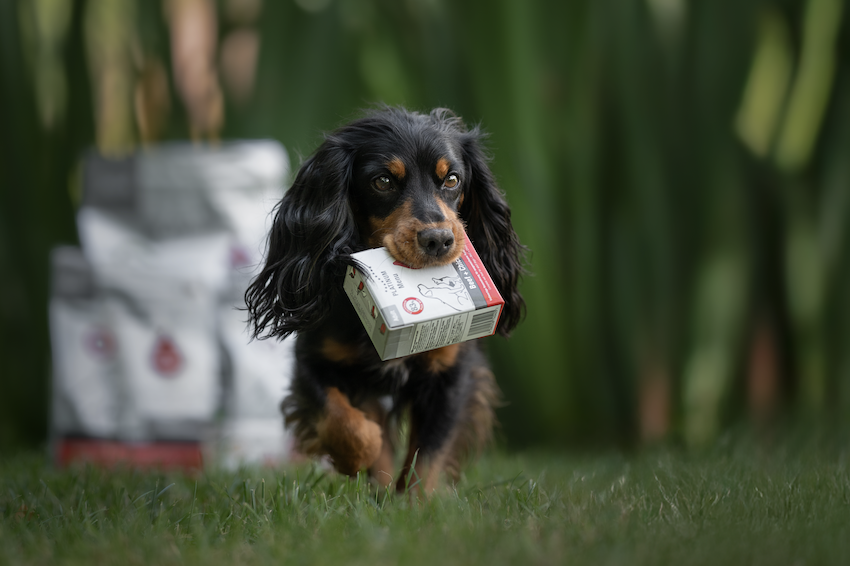Risky Business
Insurance is always about attitude to risk, but you must be aware your working dogs can get hurt, and putting them right might cost more than you think.

In the spring of 2018 my two labradors stumbled across an unusually docile muntjac in the middle of a fallow field whilst we are out on a long walk.
If it had got up and made a sharp exit, the dogs would have returned to me, and a lot of trouble would have been avoided. But I suspect it was an elderly animal because it wasn’t moving too well. It made a poor attempt at escape and evasion and my two otherwise well behaved and largely obedient dogs were suddenly experiencing the thrill of the chase. They completely ignored my whistle and shouting, as the little deer lumbered back past me with its canine escort. The dogs were either side of the animal but obviously, being labradors, they had no instinctive desire to harm the deer. If anything they wanted to play, but they picked the wrong partner.
As it gradually slowed to an almost standstill I grabbed them both and, after some extremely stern words, we marched on with the dogs under control. Meanwhile, the unharmed muntjac retreated to the nearby woods.
An undetected wound
At the time I was furious, but didn’t think any damage had been done. Later on, however, when my older bitch turned away from me, I noticed the gash in the side of her neck. Because she had shown no sign of distress at the time I had not realised the muntjac had used its sharp tusks to slice her open.
I didn’t like the look of the wound and consulted a nursing friend who told me to head to the vets. It wasn’t a difficult job to clean and stitch it, and she healed reasonably well. But… about a month later I suddenly noticed a large and worrying lump right on the top of her neck. I went to the vet immediately and was told it could be a malignant tumour or it could be some rogue scar tissue related to the muntjac incident, even though it was in a different part of her neck from that injury.
The problem was I was just about to head abroad for two months and they couldn’t get the test results back before I left. So, knowing I was leaving the dogs with family and wanting to deal with the issue before I left, I agreed to have the whole lump removed there and then, rather than have the tests done.
It was one of those ‘weighing up the best option’ decisions, and eventually it turned out it was scar tissue from the original wound, even though it was in a different part of her neck. It was obviously a big relief to discover it wasn’t a tumour. But after the lump was removed the wound didn’t heal well so she needed another operation which, apart from being distressing, was also expensive.
Paying the price
And here’s the rub. All told that altercation with the well-armed little muntjac ended up costing the best part of £1,000. The original procedure to clean and stitch the wound, the lump removal and then the follow-up operation to mend the wound that wouldn’t heal all added up.
I have two dogs and decided some time ago I couldn’t really justify the cost of insuring them both. But it doesn’t take too many incidents like the muntjac injury to make one consider the best course of action.
It was a large amount of money to find quickly, but any responsible dog owner needs to think about that when deciding not to insure. You can’t work on the basis you won’t have vets’ bills. Accidents will happen and illnesses will happen. So if you choose not to insure your dogs then you need have an emergency fund ready for the unexpected bills. It would cost me north of £500 a year to insure my two labs properly. Even then I would have to pay the excess in the event of a claim so I don’t think it’s unreasonable to budget for £500 a year in terms of an emergency fund. I’ve had two dogs for three years so that’s £1,500 in the pot already. But I spent nearly £1,000 last year so I’m about £500 in credit at the moment. Believe me I’m touching wood and crossing my fingers as I type.
Ultimately only you can assess your own attitude to risk and make your own decision about insurance. If peace of mind and security are the pillars of your wisdom then there are lots of excellent providers out there, not least Agria who provide the working dog insurance through BASC. But, equally if you have a number of dogs and can’t stomach the premiums then please be prepared for the big bills when they come in. You might be lucky and have a dog who never incurs a serious vet bill, but I wouldn’t count on it.
Experts on insurance
I asked a few Gundog Journal experts for their views on the matter to try and give a rounded view and this is what I discovered. Michelle Oseman said: “Running a large pack of dogs makes it almost financially impossible to insure them all. But my personal preference is to choose insurance cover with a ‘For Life’ policy for all dogs up until the age of two-years-old. A ‘For Life’ or ‘Lifetime’ policy covers your dog for ongoing treatment of any illness or injury diagnosed for life within those first two years, rather than them being excluded from cover for that particular ailment when you next renew your policy. This will ensure that as long as you renew your policy with that particular insurer you should have ongoing medical cover for any long-term injuries or illnesses that are detected in those all important first years. It is worthwhile taking the time to shop around for quotes because, as with all insurance, you need to ensure you are getting the right policy for your situation. Nobody wants to have to find hundreds of pounds to cover the cost of an injury just because they weren’t aware their policy limit was exceeded or that their insurer wouldn’t cover an injury that occurred in a ‘working’ environment.”
Pointer man Peter Curran said: “Yes, we do insure our working pointers, but only until they are approximately eight to 10 years old, as the premiums skyrocket and you have to pay a large percentage of the claim. We are currently with Petguard who advertise in shooting magazines. We have not had to make a claim yet (touch wood). We also know Agria cover working dogs, as do the NFU, but I think you need to have your house and contents insurance with them.”
Jayne Coley said: “As a rule, I don’t insure my dogs because it would be too expensive. However, I have insured the puppy I had in lieu of a stud fee. Problems can crop up at any time during a dog’s life, but with all the health tests that are carried out these days, I decided to insure him. Once he has had his hips and elbows X-rayed and scored, subject to all being okay, I will probably cancel the insurance.”
Jeremy Organ said: “Since I’ve been involved in gundogs, many other owners have asked me, ‘Should I insure my dog(s)?’. My simple answer is yes, although paradoxically I don’t have ours insured due to the fact we have far too many and it works out more beneficial financially to pay as I go.
“There are a couple of reasons I would suggest owners who have one or two dogs should insure them. Throughout their working life, gundogs put themselves at such a risk of injury that it would be foolish to think it won’t happen to you. And nowadays veterinary fees are so high, mainly due to the fact that most vets now refer you to specialists. In the old days vets would do everything themselves and this kept the bills down, but things have moved on and what they can now do for our dogs is sometimes better than for us humans!
“My advice would be to shop around and see which policy suits your needs.”
We would love to hear about your experiences with gundog insurance? Has it saved you a fortune or do you think it’s unnecessary? Let us know by email: will.hetherington@fieldsportspress.com
Related Articles
Get the latest news delivered direct to your door
Subscribe to Gundog Journal
Unlock the full potential of your working dog with a subscription to Gundog Journal, the UK’s only dedicated magazine for gundog enthusiasts. Published bi-monthly, this authoritative resource delivers expert training advice, in-depth interviews with top trainers and veterinary guidance to help you nurture a stronger bond with your dog.
With stunning photography and thought-provoking content, Gundog Journal is your essential guide to understanding, training and celebrating your working dog.
Save 10% on shop price when you subscribe, with a choice of packages that work for you. Choose from Print & Digital or Digital only with each journal delivered directly to your door or via the app every other month, plus access to past issues with the digital back issue library.







